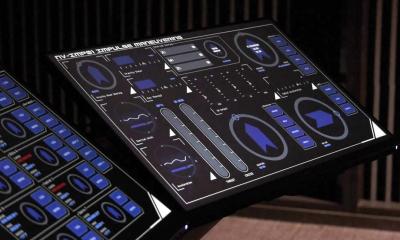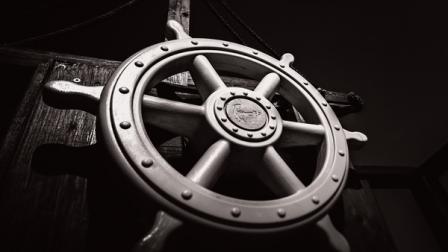
Trainee quartermasters (helm operators) are now able to experience what it will be like to have a starship under their control. Engine prototyping has provided sufficient data to enable simulations of vessel maneuvering at impulse (sublight) speeds.
“We were anticipating the experience to be more like operating a large submarine,” says Master Chief Sonya Akakios, the ISDC’s most senior quartermaster. “What we’re actually seeing isn’t too far off that, with the most obvious difference being momentum.”
In space there is no air or water resistance to slow a vessel down so it will continue to travel at the same speed unless reverse thrust is applied. A vessel travelling on momentum alone doesn’t require power-intensive thrust, so it's harder to detect. Simulations have indicated that engine thrust will be a major source of detectable electromagnetic (EM) emissions especially as engine output gets close to maximum.
 The EM “noise” made by engines is an issue that Petty Officer Paul McNeilson, a senior member of the propulsion team conducting engine prototyping, has been grappling with.
The EM “noise” made by engines is an issue that Petty Officer Paul McNeilson, a senior member of the propulsion team conducting engine prototyping, has been grappling with.
“We’ve noticed that there’s a spot on the engine response profile where EM emissions start to really spike – something we’ve dubbed ‘cavitation’,” he says, referring to a phenomenon in submarines where high propeller speeds cause noise-making bubbles to form. Applying this analogy to impulse engines, quartermasters are limited in how much thrust they can apply without risking detection.
Evading detection while being able to track other vessels – often at extreme range – is a key tactical requirement for which a good quartermaster is vital. While ensuring their own EM wake doesn’t give them away, the quartermaster will work closely with the tactical team, constantly adjusting the vessel’s heading to assist EMDAR operators with pinpointing targets.
Once a target is acquired, the speed and direction of approach is critical to the success of a torpedo strike. Launched too far away or while travelling too slowly and the target will have a greater chance of evading the torpedo. Too close or too fast and the target may have already launched its own strike.
 The helm itself looks deceptively easy to use. A relatively small group of sliders, dials and buttons will be used to control the vessel at impulse speeds. The trick is knowing when, how fast and by how much to turn, according to Akakios.
The helm itself looks deceptively easy to use. A relatively small group of sliders, dials and buttons will be used to control the vessel at impulse speeds. The trick is knowing when, how fast and by how much to turn, according to Akakios.
Even stopping requires thinking ahead, as reverse thrust takes longer to slow the vessel than it took to initially reach that speed.
Quartermasters will also have responsibility for more complex maneuvers such as orbital insertion or superluminal (faster than light) operations. But for now the focus is on what is considered a core competency for quartermasters: impulse maneuvering.
Becoming a Quartermaster
Trainee quartermasters will participate in an initial navigation principles seminar including practical exercises to familiarise them with helm operation and vessel responsiveness. From there, trainees will have access to their own simulation so that they can practise wherever they are.
Once they think they have the right stuff, trainees will undertake a series of evaluation exercises. If successfully completed, trainees can then take part in competitive hunt/kill simulations, designed to allow quartermaster and tactical trainees to train alongside each other. These exercises will also be used to begin selecting candidates for advanced training to be part of Endeavour’s launch crew.
- Log in or register to post comments







